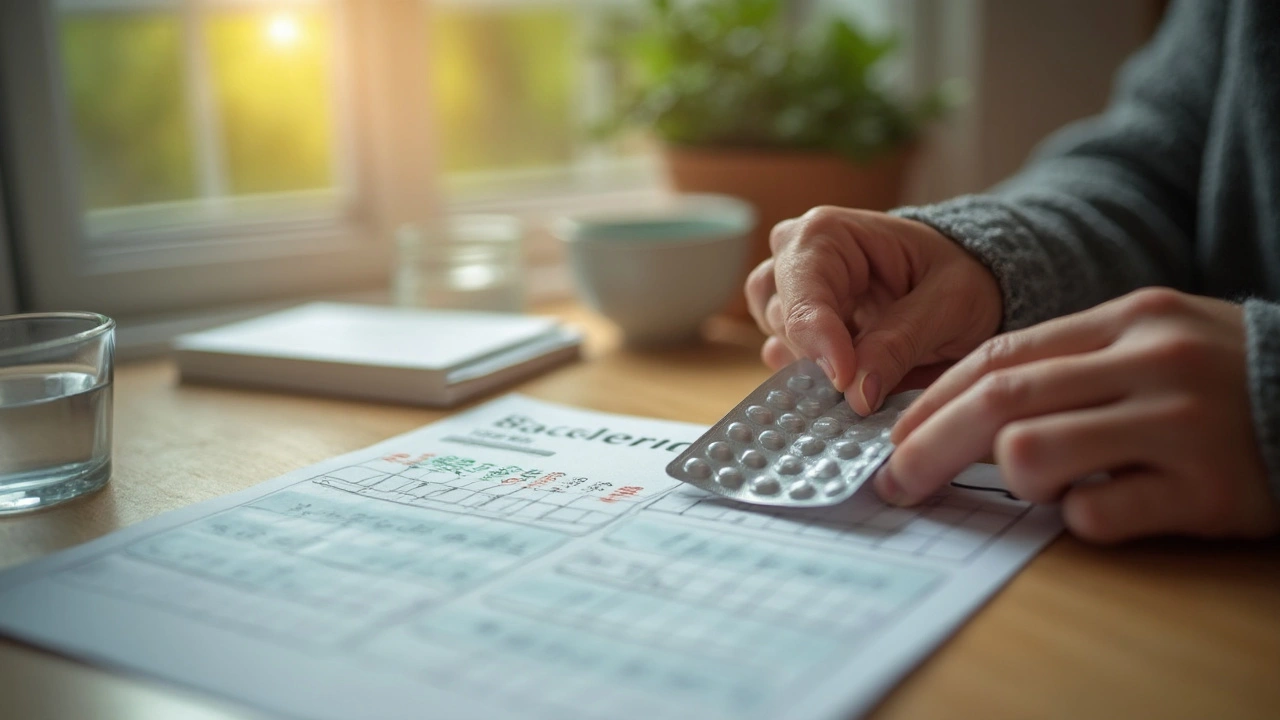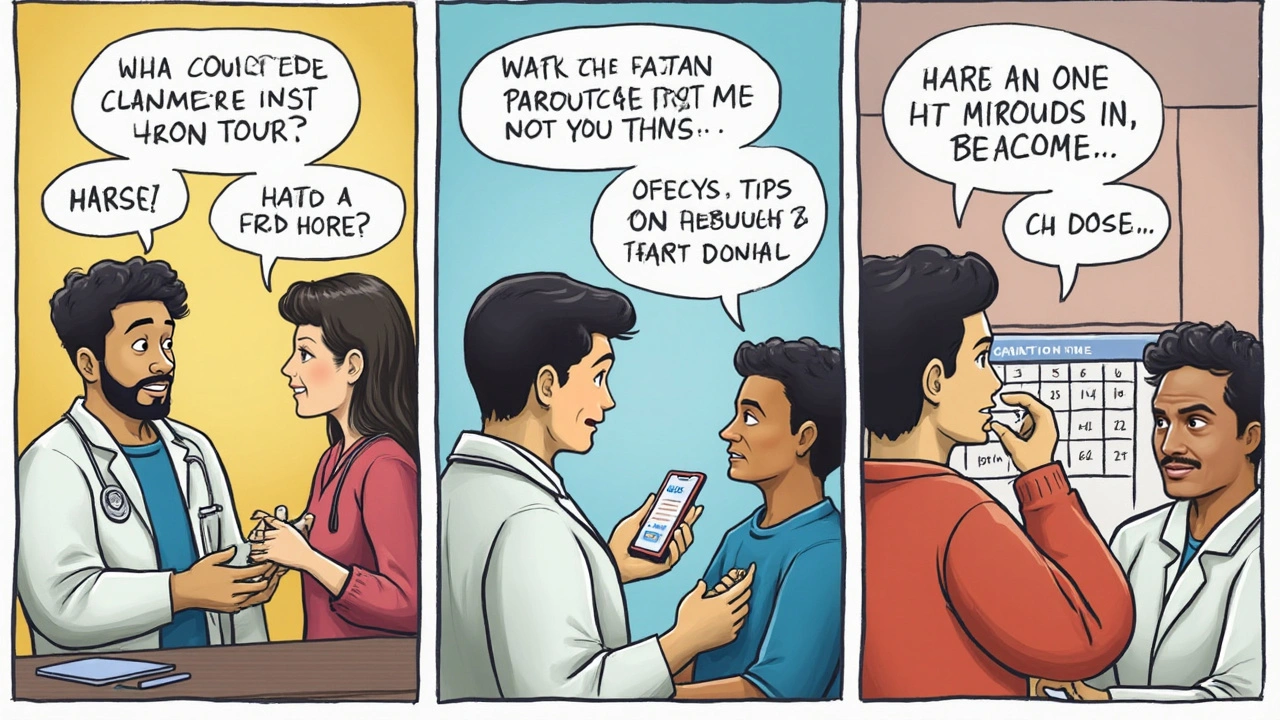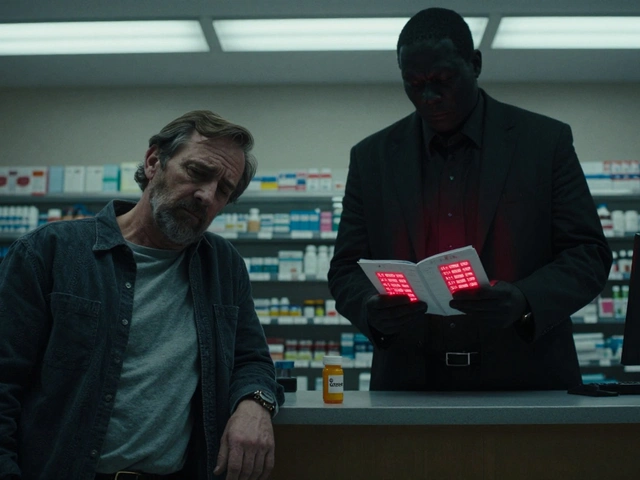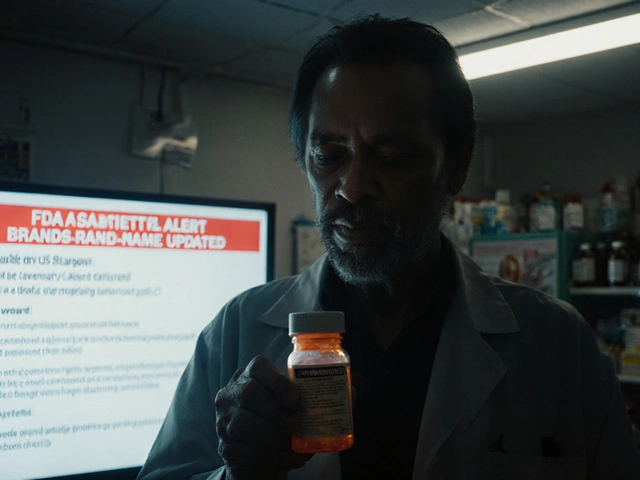Ever wondered why a muscle can turn into a rigid brick after an accident, spinal cord injury, or a tough round with multiple sclerosis? Spasticity—when your muscles don’t get the memo to relax—turns simple moves into battles. Baclofen isn’t exactly a household name, but for people living with muscle problems, this medication changes daily life. So let’s get real about how it works, who takes it, why it’s prescribed, and why some folks treat it like a lifeline.
How Baclofen Works and What It's Really For
If you peeked inside a bottle, baclofen just looks like white tablets—nothing fancy. But what it does inside your body is pretty wild. It targets nerve signals in the spinal cord that cause muscles to spasm, kick, or clamp down. Basically, it calms things down right where the chaos starts—the central nervous system. The drug was first approved in the 1970s, and since then, it’s been a mainstay for treating spasticity caused by multiple sclerosis (MS), spinal cord injuries, or sometimes even brain injuries.
Imagine trying to write, walk, or just scratch your nose when your arm cramps or your legs move on their own. Baclofen works by mimicking gamma-aminobutyric acid (GABA), a natural messenger in the brain known to put the brakes on nerve activity. When GABA’s not doing enough, baclofen steps in. This isn’t just theory—decades of research, thousands of patient stories, and hard clinical data show that for many, things change for the better once this med kicks in.
Doctors prescribe baclofen in tablets and, for the most stubborn cases, by pumping it right into the spinal cord using a gadget called an intrathecal pump. The oral pills come in strengths like 10 mg or 20 mg, and people usually start low—to avoid side effects—then slowly ramp up. There’s a wide range of doses, but a typical adult might work up to 60-80 mg a day, split over two or three doses. Kids get it too, especially if they have cerebral palsy and trouble controlling their muscles. But dosing is a careful job, and it’s tailored for each person’s needs.
Off-label, baclofen has gained attention in treating hiccups that just won’t quit and, a bit controversially, for alcohol use disorder. Some small studies suggest it cuts cravings for booze; some doctors prescribe it when other meds fail, but the jury’s still out on how well it works there. And let’s not skip the odd bit: a few French doctors have looked at baclofen for anxiety, but the evidence is spotty.
Not everyone responds the same. Sometimes, a person’s spasticity barely budges, while someone else regains serious mobility. The complexity here isn’t just dose, it’s how your central nervous system reacts and adapts. This makes close doctor supervision crucial—you can’t just tinker with the dose at home or stop cold turkey.

Baclofen's Side Effects and Safety: What You Really Need to Know
So, baclofen has a few tricks up its sleeve, but side effects are where things get interesting. The most common? Drowsiness. Almost everyone feels a bit more tired at first, and for some, that feeling never quite goes away. Dizziness comes next—stand up too fast, and you might get a head rush. Weakness is a known problem, especially if the dose climbs quickly.
Other side effects pop up now and then: nausea, headaches, and sometimes confusion. Some folks complain they drop things more or feel off-balance, likely because the drug slows down the nervous system a notch too far. It can even cause blurry vision or, rarely, trouble peeing. Not exactly fun extras when all you want is to move better, right? But for many, these side effects fade as their body adapts.
Here’s a story you don’t want: suddenly quitting baclofen, especially after high doses or using a pump, can land you in the emergency room. Your muscles might spasm out of control, or you could develop hallucinations and fever. In the worst cases, withdrawal has triggered seizures or, rarely, life-threatening problems. This is why doctors will always tell you—never just stop; always taper down with help.
Safety tips? If you’re starting or adjusting baclofen, avoid driving until you know how it affects you. I’ve had patients text me after a week, saying they felt in a fog but hoped it’d clear—they were right, mostly, but it took time. Seniors or folks with kidney problems face more risk, since baclofen leaves the body through urine, and when that process slows down, side effects can stack up fast. Always let your doctor know if you’re on other meds for mental health or seizures, as mixing baclofen with certain meds (like benzodiazepines) can ramp up the drowsiness or risk of breathing problems.
Baclofen isn’t usually habit-forming, but your nervous system definitely gets used to it. Miss a few doses without a plan, and it can make things worse than before. That’s why, if you’re ever swapping to a new muscle relaxant or stopping for surgery, doctors create a schedule for cutting back slowly. Want an extra hack? Set reminders to take each dose—missing even one can undo weeks of progress.
There’s a rare but weirdly serious complication called baclofen overdose or toxicity. Signs include muscle weakness so bad you barely move, difficulty breathing, seizures, and coma. If you or someone you love is on baclofen and acts deeply confused or can’t wake up, medical help isn’t optional—it’s urgent.

Smart Baclofen Use: Tips for Real Life and Patient Stories
The real world isn’t a clinical trial. People have jobs, families, and stuff to do—and nobody wants to deal with a med that takes them out of the action. Baclofen works best when you match it to your routine and needs. Start with the basics: ask your prescriber about the best time to take it (often with meals to prevent nausea) and if you should split doses to keep a steady level in your body. If you’re using it in the evening, it might cut down on nighttime spasms and help with sleep—bonus if you tend to wake up stiff.
Some users make a ritual out of pill taking—pairing it with morning coffee or a timer on their phone. Anything that keeps you consistent means fewer ups and downs in your symptoms. And don’t try to play pharmacist at home—never tweak the dose on your own. Even small extra amounts can stack up, especially if your kidneys aren’t at their peak.
Physical therapy often goes hand-in-hand with baclofen. Think of it as a tag team—while baclofen loosens the spasticity, a good PT helps rebuild strength, stretch tight muscles, and keep joints in working shape. One man I spoke with, living with MS, described baclofen as "the oil" that lets the gears of his legs move freely, while exercise kept them strong enough to use.
Nutrition and hydration also get shout-outs here, since dehydration can make muscle spasms worse. If you’re living with a pump, you’ll see your care team regularly to check on the device and refill the meds. This routine can be a lifeline for folks who can’t stomach pills or need high doses, but it comes with more monitoring. If the pump suddenly fails or empties, you’ll notice symptoms ramp up surprisingly fast—never skip those appointments!
And yes, patience is your secret weapon. Baclofen doesn’t kick in with the fiery speed of painkillers. Some people notice relief in a few days; for others, it takes weeks at just the right dose before things stabilize. Track your symptoms with a notebook or app. You’ll impress your doctor (nobody minds a well-informed patient), and you’ll spot patterns you might otherwise miss, like side effects tied to meal times or activity levels.
What about kids or elderly family members? Be extra cautious. The elderly are at a serious fall risk if side effects hit, and children might not describe dizziness or weakness well—they just act differently or sleep more. Keeping an eye out can make a difference if something’s off after a dose change.
Keep your healthcare team in the loop with everything you’re taking—even over-the-counter stuff or supplements. Baclofen plays best when everyone’s aware of the bigger picture. If you find yourself running out, don’t wait—let your doctor know so you don’t have to skip doses. Pharmacy mix-ups happen, especially if insurance or supply chains get weird, so build in a little buffer.
Some final food for thought: people’s experiences with baclofen run the spectrum, from "life’s finally manageable" to "not worth the hassle." The key is finding the right setup for your needs. Talk openly about what’s working and what’s making life harder. And if spasticity’s making you miserable, know that baclofen is just one of the tools in the box—sometimes, adding rehab, new routines, or other meds gives you the breakthrough you’re hoping for.
No magic fix here, but for lots of people, baclofen lets them write, walk, and live just a bit more freely. And that’s something you can’t get from any bottle alone.






Dipak Pawar
July 18, 2025 at 12:30
Fascinating topic indeed, the pharmacodynamics of baclofen merit a thorough investigational discourse. This centrally acting skeletal muscle relaxant, primarily an agonist at GABA-B receptors, exhibits nuanced modulatory effects on neurotransmission that result in reduced spasticity—a clinical attribute pivotal in conditions like multiple sclerosis and spinal cord lesions.
It's remarkable, the dual nature of its clinical usage and side effect profile, which includes both somnolence and more obscure manifestations such as hypotonia or even psychological disturbances in some instances. Given the drug’s intricate engagement with the central nervous system, the precision in dosage titration is critical to maximize therapeutic outcomes while mitigating adverse effects.
Furthermore, the evolving off-label applications, including potential roles in neuropsychiatric domains such as alcohol dependence treatment, underscore the expanding pharmaco-therapeutic horizon. One wonders about the extent to which neuropharmacological mechanisms involved in baclofen’s action may be exploited for broader clinical benefits without invoking undue risks. What are the prevailing clinical guidelines regarding such experimental uses, and how is patient safety ensured amidst this expanding ambit?